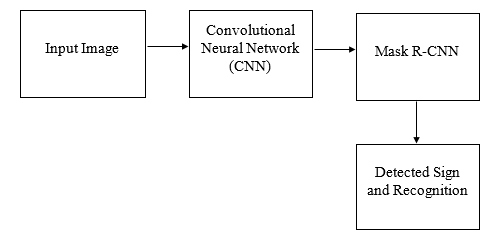- ALL COMPUTER, ELECTRONICS AND MECHANICAL COURSES AVAILABLE…. PROJECT GUIDANCE SINCE 2004. FOR FURTHER DETAILS CALL 9443117328


Projects > ELECTRONICS > 2020 > IEEE > DIGITAL IMAGE PROCESSING
Automatic detection and recognition of traffic signs plays a crucial role in management of the traffic-sign inventory. It provides an accurate and timely way to manage traffic-sign inventory with a minimal human effort. In the computer vision community, the recognition and detection of traffic signs are a well-researched problem. A vast majority of existing approaches perform well on traffic signs needed for advanced driver-assistance and autonomous systems. However, this represents a relatively small number of all traffic signs (around 50 categories out of several hundred) and performance on the remaining set of traffic signs, which are required to eliminate the manual labor in traffic-sign inventory management, remains an open question. In this paper, we address the issue of detecting and recognizing a large number of traffic-sign categories suitable for automating traffic-sign inventory management. We adopt a convolutional neural network (CNN) approach, the mask R-CNN, to address the full pipeline of detection and recognition with automatic end-to-end learning. We propose several improvements that are evaluated on the detection of traffic signs and result in an improved overall performance. This approach is applied to detection of 200 traffic-sign categories represented in our novel dataset.
Local Binary Patterns (LBP), Support Vector Machine (SVM)
This system proposes a deep-learning-based system for learning a large number of traffic-sign categories using convolutional neural networks. We base our system on the state-of-the art detector Mask R-CNN, which demonstrated a great accuracy and speed in the field of object detection. The same network architecture is used not only for the TSR but also for accurate localization using a region proposal network, resulting in an efficient end-to-end learning. In contrast to traditional approaches with hand-crafted features, the convolutional approach is applied to a broad set of categories, where individual traffic-sign instances are not only subject to change in lighting conditions, scale, viewing angle, blur, and occlusions, but also to significant intra-category appearance variations as well as low inter-category variations. Furthermore, we propose improvements to Mask R-CNN that are crucial for the domain of traffic signs. We propose adaptations that increase the recall rate, particularly for small traffic signs, and introduce a novel augmentation technique suitable for traffic-sign categories.
BLOCK DIAGRAM
